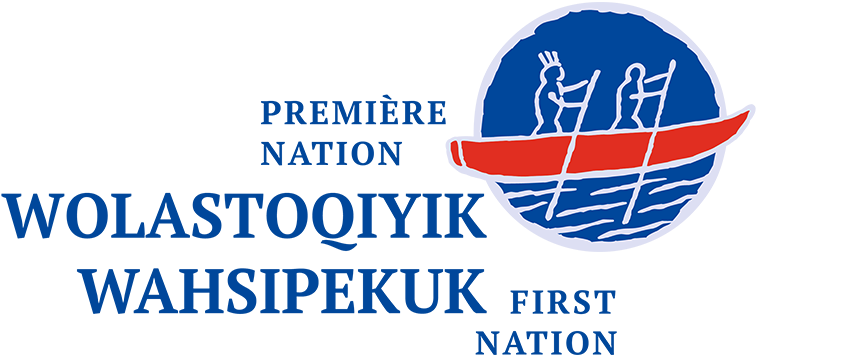

Home / Lessons / Level 1 / 2. The Wolastoqey Nation and Individuals
In this lesson, you will discover the main terms that express the connections between the Wolastoqey people and the land. You will learn to distinguish between the different terms used to describe the nation, the communities, and the people who are part of it.
Wolastoq
 – The river that flows through the ancestral territory of the Wolastoqey nation. This river has been designated on maps as the Saint John River or St. John’s River since the early 17th century following the first voyage of Samuel de Champlain to Acadia.
– The river that flows through the ancestral territory of the Wolastoqey nation. This river has been designated on maps as the Saint John River or St. John’s River since the early 17th century following the first voyage of Samuel de Champlain to Acadia.
Wolastokuk
 – The ancestral territory of the Wolastoqey nation. This territory roughly encompasses the watersheds connected to the Wolastoq River and extends from the Saint Lawrence River to the Bay of Fundy, from north to south, and from around Matane to the Etchemin River near Lévis, from east to west. Wolastokuk extends beyond the borders of Quebec, New Brunswick, and the United States into the state of Maine
– The ancestral territory of the Wolastoqey nation. This territory roughly encompasses the watersheds connected to the Wolastoq River and extends from the Saint Lawrence River to the Bay of Fundy, from north to south, and from around Matane to the Etchemin River near Lévis, from east to west. Wolastokuk extends beyond the borders of Quebec, New Brunswick, and the United States into the state of Maine
Wolastoqey
 – The Wolastoqey Nation.
– The Wolastoqey Nation.
Wolastoqiyik
 – The people, the individuals of the Wolastoqey nation. To simplify, it’s somewhat the plural form of the term Wolastoqey.
– The people, the individuals of the Wolastoqey nation. To simplify, it’s somewhat the plural form of the term Wolastoqey.
Wahsipekuk
 – The community, the only one located in Quebec.
– The community, the only one located in Quebec.
Ktopeqonuk
 – Traditional gathering place located in Cacouna, on the point of land next to the administrative offices. Site of powwow celebrations. Means a place where spring water flows.
– Traditional gathering place located in Cacouna, on the point of land next to the administrative offices. Site of powwow celebrations. Means a place where spring water flows.
Kataskomiq
 – Reserve land located on the outskirts of the municipality of Saint-Hubert-de-Rivière-du-Loup. Means desert or desolate place.
– Reserve land located on the outskirts of the municipality of Saint-Hubert-de-Rivière-du-Loup. Means desert or desolate place.
Cacouna
 – Reserve land enclave within the boundaries of the municipality of Cacouna. Traditionally frequented in the summer by the Wolastoqiyik people. The origin of this word is uncertain
– Reserve land enclave within the boundaries of the municipality of Cacouna. Traditionally frequented in the summer by the Wolastoqiyik people. The origin of this word is uncertain
Here is a map representing the ancestral territory and communities of the Wolastoqey Nation.

Wolastoqey  : in addition to referring to the nation, this term is also an adjective used to describe things related to the Wolastoqey people.
: in addition to referring to the nation, this term is also an adjective used to describe things related to the Wolastoqey people.
Examples:
Here are some terms used in the wolastoqey language to refer to Indigenous individuals:
Skicin  – an Indigenous person
– an Indigenous person
Skicinuwok  – Indigenous people (plural)
– Indigenous people (plural)
Waponahkew  – A person belonging to one of the nations of the Wabanaki Confederacy, which includes the Wolastoqey, Mi’kmaq, Penawapskew (Penobscot), Abenaki (W8banaki), Peskotomuhkati (Passamaquoddy) nations (plural: waponahkiyik or ckwaponahkiyik)
– A person belonging to one of the nations of the Wabanaki Confederacy, which includes the Wolastoqey, Mi’kmaq, Penawapskew (Penobscot), Abenaki (W8banaki), Peskotomuhkati (Passamaquoddy) nations (plural: waponahkiyik or ckwaponahkiyik)
Here are some terms used in the wolastoqey language to refer to non-Indigenous individuals:
Wenuhc  – non-Indigenous person (white person)
– non-Indigenous person (white person)
Wapeyit  - non-Indigenous person (white person, directly refers to the word «white»)
- non-Indigenous person (white person, directly refers to the word «white»)
In the wolastoqey language, people are sometimes referred to based on their language of expression, skin color, or country of origin:
Ikolisoman  – English (comes from the English term Englishman)
– English (comes from the English term Englishman)
Polecomon  – French (comes from the English term Frenchman)
– French (comes from the English term Frenchman)
Elisomen  – Irish (comes from the English term Irishman)
– Irish (comes from the English term Irishman)
Mokoseweyit  – Black person (refers to the term «black»)
– Black person (refers to the term «black»)
Here are different ways to refer to one or more individuals of the Wolastoqey nation:
Wolastoqew 
Wolastoqewi 
Wolastoq 
Wolastoqewisq  ou Wolastoqewisqehs (feminine form)
ou Wolastoqewisqehs (feminine form) 
Wolastoqewiyik  or Wolastoqiyik (plural form)
or Wolastoqiyik (plural form) 
Dialogue example:
Question: Kil Wolastoqew ?  / Are you from the Wolastoqey nation?
/ Are you from the Wolastoqey nation?
Answer: Aha, Nil Wolastoqew !  / Yes, I am from the Wolastoqey nation!
/ Yes, I am from the Wolastoqey nation!
In this dialogue, that is to say for the question and for the answers, the words can be reversed.
Ktahkomiq  Territory or land |
||
Kcihq  Forest |
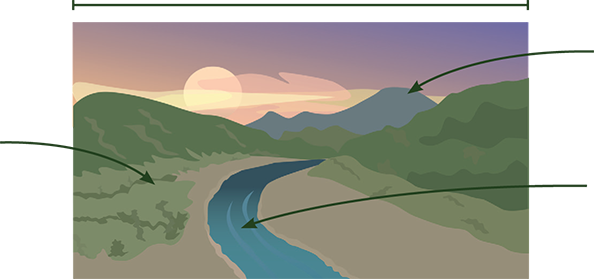 |
Woc  Mountain Sip  River |
Supeq  Ocean Sonutamkiw  Beach |
 |
Ponapsq (singular)  Ponapskul (plural)  Rock(s) |
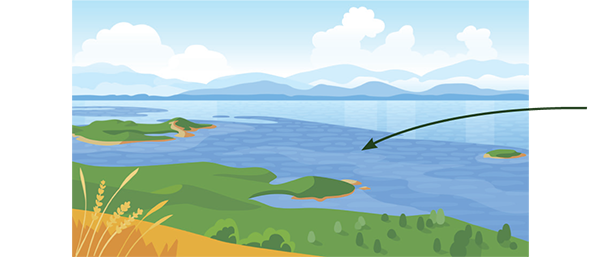 |
Wahsipekuk  St. Lawrence River Wolastoq  St. John River |
|
Mip(iyil)  ( ( ) )Leaf(ves) Opos(iyik)  ( ( ) )Tree(s) |
 |
Kataskomiq  Desert, isolated place |
Qocomok  Outdoors |
Translate the following statements into Wolastoqey.
| 1. | You are a non-native person (white settler). |
|
| 2. | You are French. |
|
| 3. | You are an individual from the Wolastoqey Nation. |
|
| 4. | You are Irish. |
|
| 5. | You are a woman from the Wolastoqey Nation. |
|
| 6. | You are a bear. |
|
| 7. | You are a turtle. |
|
| 8. | You are a blue jay. |
|
| 9. | You are a snake. |
|
| 10. | You are a muskrat. |
|
Answer the questions below with complete sentences, written in Wolastoqey.
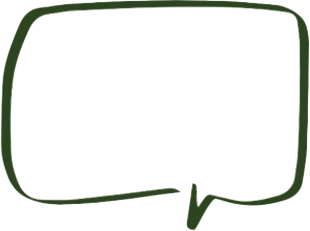 Kil
Kil
 Aha,
Aha,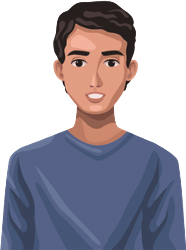
 Ontama,
Ontama,
 Kil
Kil




Replace the words in parentheses with their Wolastoqey equivalents.
| 1. | (The ancestral territory) encompasses several Indigenous communities. |
| 2. | I saw (a Wolastoqey canoe) on the river. |
| 3. | Ash is needed to make a (Wolastoqey basket) . |
| 4. | (A blue jay) rests at the foot of a tree. |
| 5. | (The Saint John River) is at the centre of the territory. |
| 6. | I saw (a salmon) and other fish in (the Saint Lawrence River) . |
| 7. | (The moose) , (the deer) and (the bear) are (animals) . |
| 8. | (The Wolastoqey song) is specific to the Wolastoqey Nation. |
| 9. | (The wolf) howls at night. |
| 10. | (The snake) is in the desert. |
| 11. | (The Canada Goose) is an agressive animal. |
| 12. | (The trees) have many (leaves) . |
Name the Wolastoqey communities where each of the individuals represented by the circles is located.
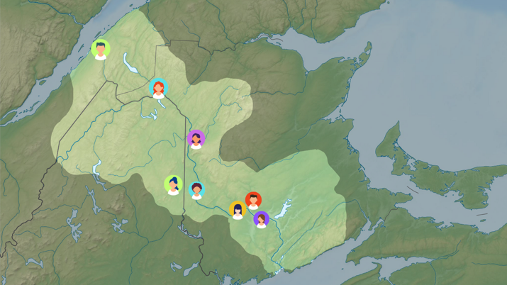








Find the Wolastoqey words that correspond to each of the elements on the list.
How it works: Click on the first letter of the word, then on the last to validate a word.
Words can overlap and go in these directions: → ↘ ↓.
Additional information for exercises solutions may appear in the Appendix of the PDF document.